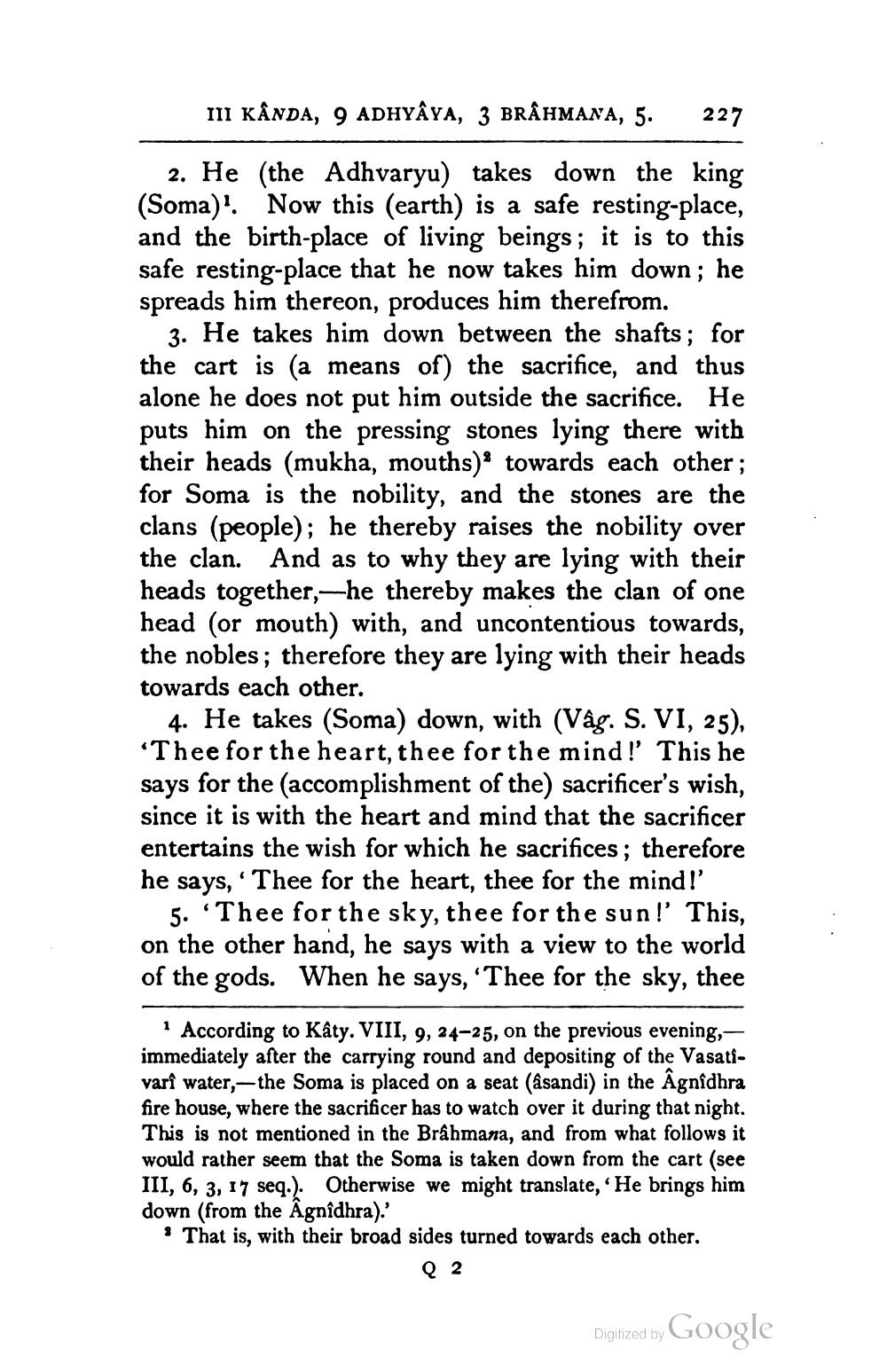________________
III KÂNDA, 9 ADHYAYA, 3 BRÂHMANA, 5.
227
2. He (the Adhvaryu) takes down the king (Soma)! Now this (earth) is a safe resting-place, and the birth-place of living beings; it is to this safe resting-place that he now takes him down; he spreads him thereon, produces him therefrom.
3. He takes him down between the shafts; for the cart is (a means of) the sacrifice, and thus alone he does not put him outside the sacrifice. He puts him on the pressing stones lying there with their heads (mukha, mouths) towards each other; for Soma is the nobility, and the stones are the clans (people); he thereby raises the nobility over the clan. And as to why they are lying with their heads together,—he thereby makes the clan of one head (or mouth) with, and uncontentious towards, the nobles; therefore they are lying with their heads towards each other.
4. He takes (Soma) down, with (Vâg. S. VI, 25), 'Thee for the heart, thee for the mind! This he says for the (accomplishment of the) sacrificer's wish, since it is with the heart and mind that the sacrificer entertains the wish for which he sacrifices; therefore he says, 'Thee for the heart, thee for the mind!
5. 'Thee for the sky, thee for the sun!' This, on the other hand, he says with a view to the world of the gods. When he says, 'Thee for the sky, thee
According to Kâty. VIII, 9, 24-25, on the previous evening,immediately after the carrying round and depositing of the Vasativarî water,—the Soma is placed on a seat (@sandi) in the Agnidhra fire house, where the sacrificer has to watch over it during that night. This is not mentioned in the Brahmana, and from what follows it would rather seem that the Soma is taken down from the cart (see III, 6, 3, 17 seq.). Otherwise we might translate, 'He brings him down (from the Agnîdhra).' ? That is, with their broad sides turned towards each other.
Q2
Digitized by Google




